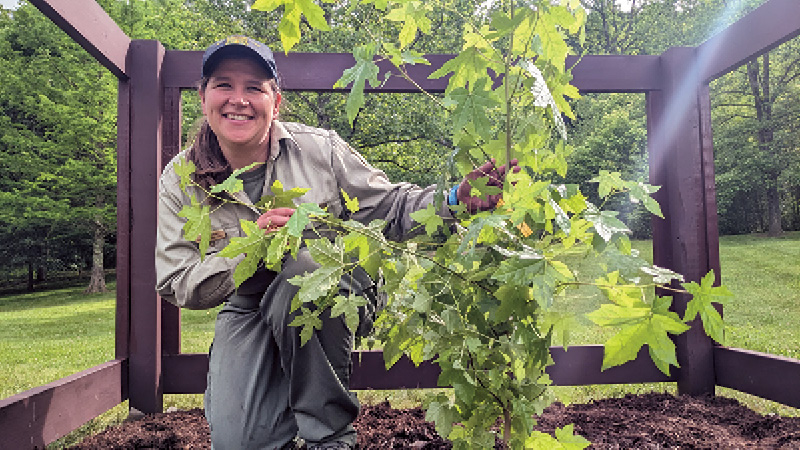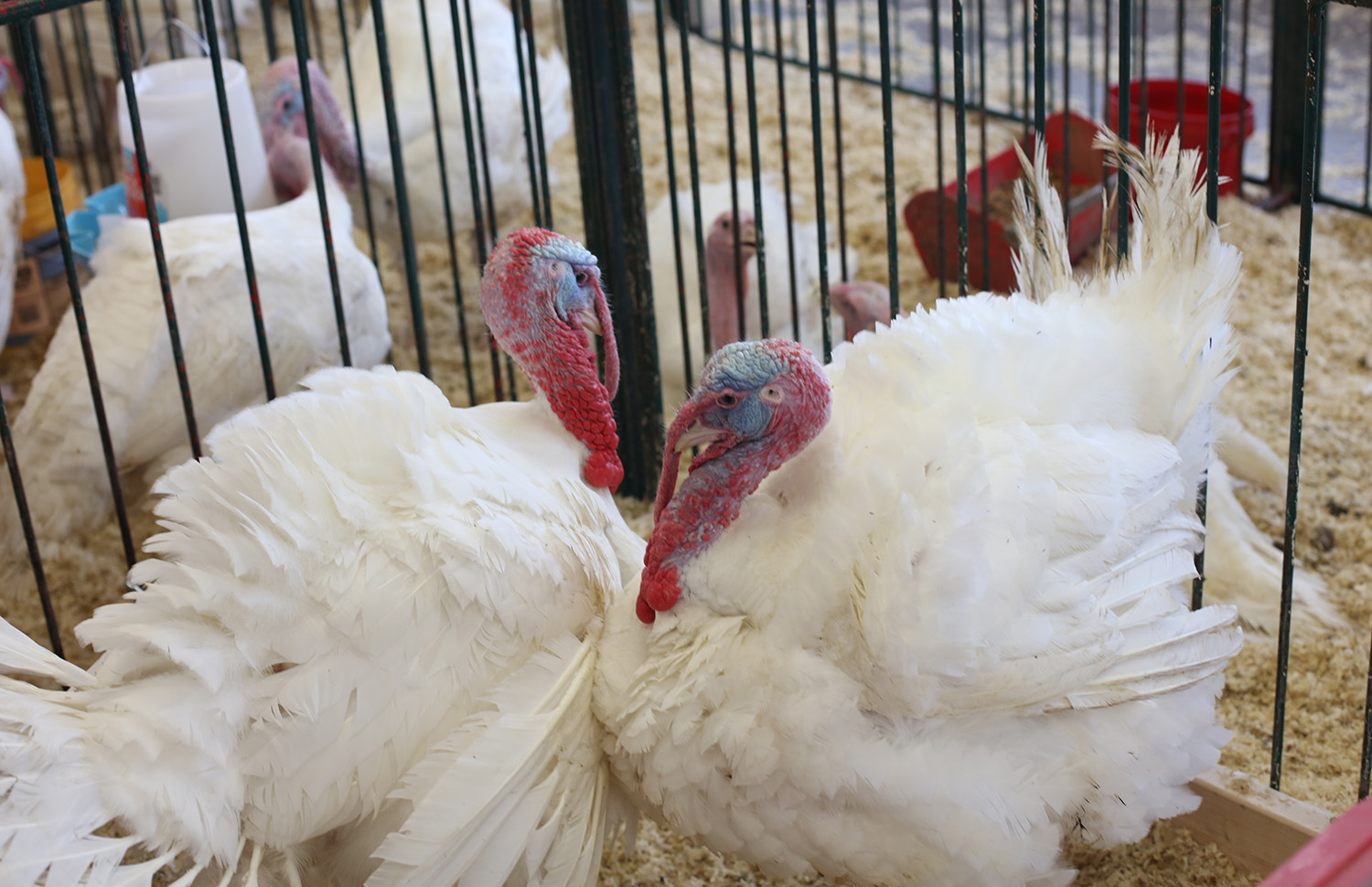From the moon to Wayne National Forest
Published 5:00 am Saturday, June 15, 2024

- Wayne National Forest Athens Ranger District Silviculturist Lily Zahor poses with the Moon Tree, a sweetgum sapling that traveled aboard NASA’s Artemis I mission on Nov. 16, 2022. The tree was recently planted at the WNF headquarters in Nelsonville. (Submitted photo | U.S. Forest Service Photo)
Staff report
NELSONVILLE — The Wayne National Forest planted a Moon Tree sapling at its Forest Headquarters building May 23 as part of an initiative between NASA and the U.S. Forest Service.
The sweetgum sapling was one of less than 1,500 seedlings flown thousands of miles beyond the moon aboard the unmanned Orion spacecraft and spent six weeks in space. NASA’s Artemis I mission launched Nov. 16, 2022, and was the first in a series of missions to enable human exploration on the moon.
Sweetgum (Liquidambar styraciflua) are native to southeast Ohio and many can be found near the headquarters and throughout the National Forest land.
The Moon Tree seedlings were grown at U.S. Forest Service nurseries. The Wayne’s sweetgum sapling was grown at the Charles E. Bessey Nursery, part of the Nebraska National Forest in Halsey, Nebraska.
Forest Supervisor Lee Stewart said the Moon Tree symbolizes the Wayne’s efforts to be a forward-thinking organization that values collaboration and innovation.
“The Moon Tree reminds us that stewarding the whole often starts as small as a seedling, and with innovation, dedication and persistence, anything is possible,” Stewart said. “We’re honored to be part of such a unique scientific partnership.”
Athens Ranger District Silviculturist Lily Zahor nominated the Wayne to receive a Moon Tree.
She cited the Forest Headquarters building’s easily accessible location to local communities as a main benefit, and that a forester will always be present to care for the tree in the future. Zahor, who wore an enamel NASA pin on her U.S. Forest Service uniform collar to commemorate the occasion, planted the Moon Tree near a pavilion with help from Forest employees.
Zahor said she hopes the sapling will inspire visitors to explore the natural world around them, particularly the National Forest.
“Ohio has a long and rich history of aviation and aerospace exploration, including the Wright Brothers and John Glenn, who have called the state home,” Zahor said. “The Moon Tree connects two separate agencies that people should appreciate, natural resources and natural wonders.”
USDA is an equal opportunity provider, employer and lender.
The forest requests that visitors admire the Moon Tree respectfully. Fencing and wire mesh will prevent wildlife and landscape maintenance activities from damaging the sapling.
The forest will hold a dedication ceremony for the Moon Tree on a date to be determined.
Additional Moon Tree species included sycamores, Douglas-firs, loblolly pines and giant sequoias.
For more information about the first-generation Moon Trees planted across the United States, visit https://nssdc.gsfc.nasa.gov/planetary/lunar/moon_tree.html.
The original iteration of Moon Trees began with the Apollo 14 mission in 1971, when Command Module Pilot Stuart Roosa brought along approximately 400–500 loblolly pine, sweetgum, Douglas-fir, redwood and sycamore seeds.
Roosa, a former U.S. Forest Service wildland firefighter, served as a smokejumper, or someone who parachutes in to fight remote wildfires, in 1953 before becoming an astronaut in 1966.





